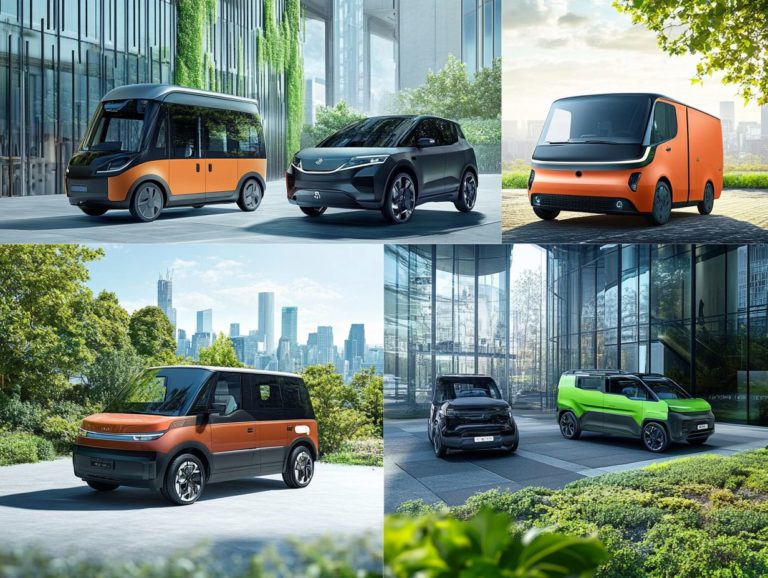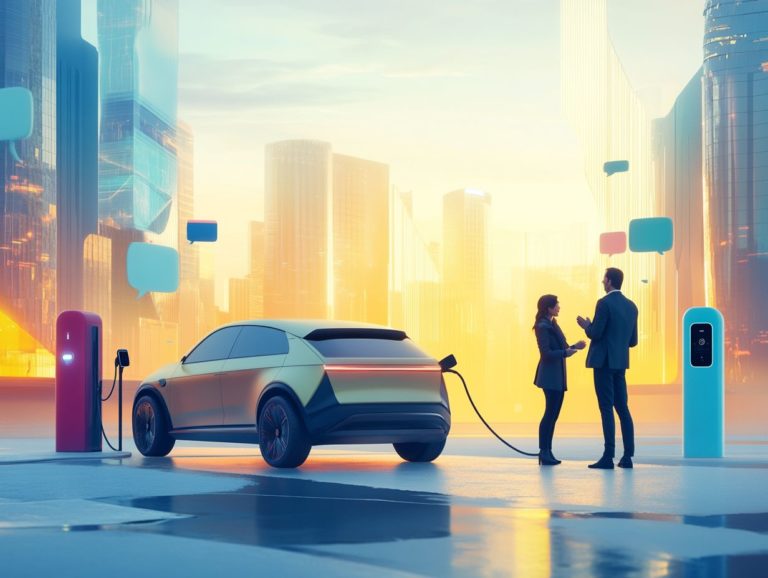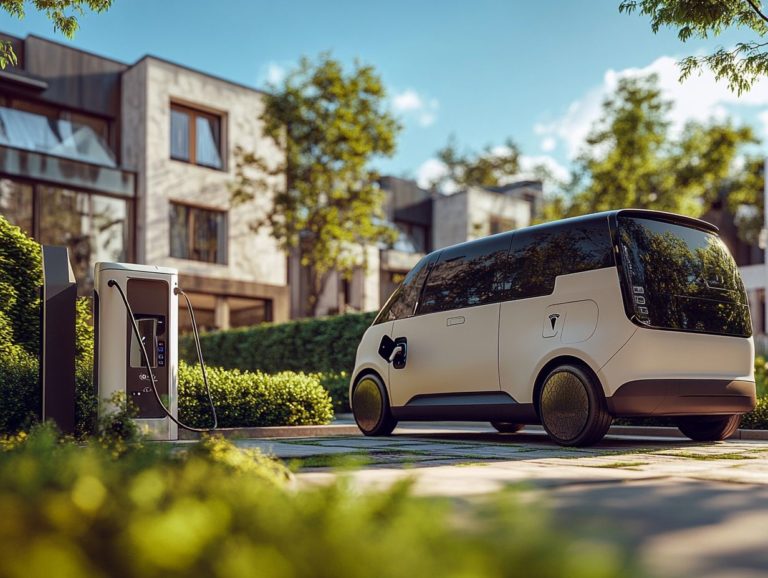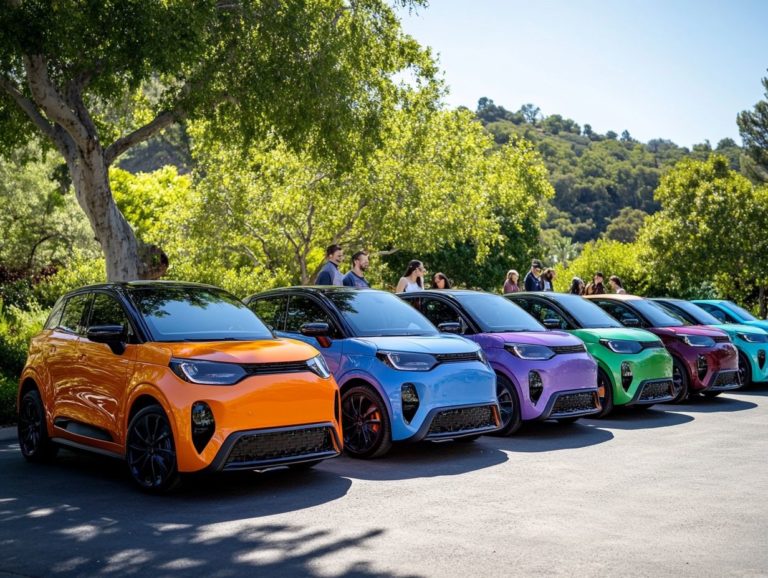27. differences between level 1, 2, and 3 chargers
Electric vehicles are becoming more popular. It’s important to understand the different charging options available to you.
This article explains the three primary types of chargers: Level 1, Level 2, and Level 3. We will highlight their distinct features, capabilities, and benefits.
Whether you re contemplating your first electric vehicle or seeking to enhance your charging setup, this guide will help you understand the unique advantages of each level. You ll be empowered to select the ideal charger that fits your lifestyle and needs.
Contents
- Key Takeaways:
- Understanding Electric Vehicle Chargers
- Level 1 Chargers
- Level 2 Chargers
- Level 3 Chargers
- Choosing the Right Charger for Your Needs
- Frequently Asked Questions
- What are the differences between level 1, 2, and 3 chargers?
- What is the charging time for each level of charger?
- What is the power output for each type of charger?
- Are all electric vehicles compatible with level 1, 2, and 3 chargers?
- What is the cost difference between level 1, 2, and 3 chargers?
- What are the main benefits of level 2 and 3 chargers compared to level 1 chargers?
Key Takeaways:
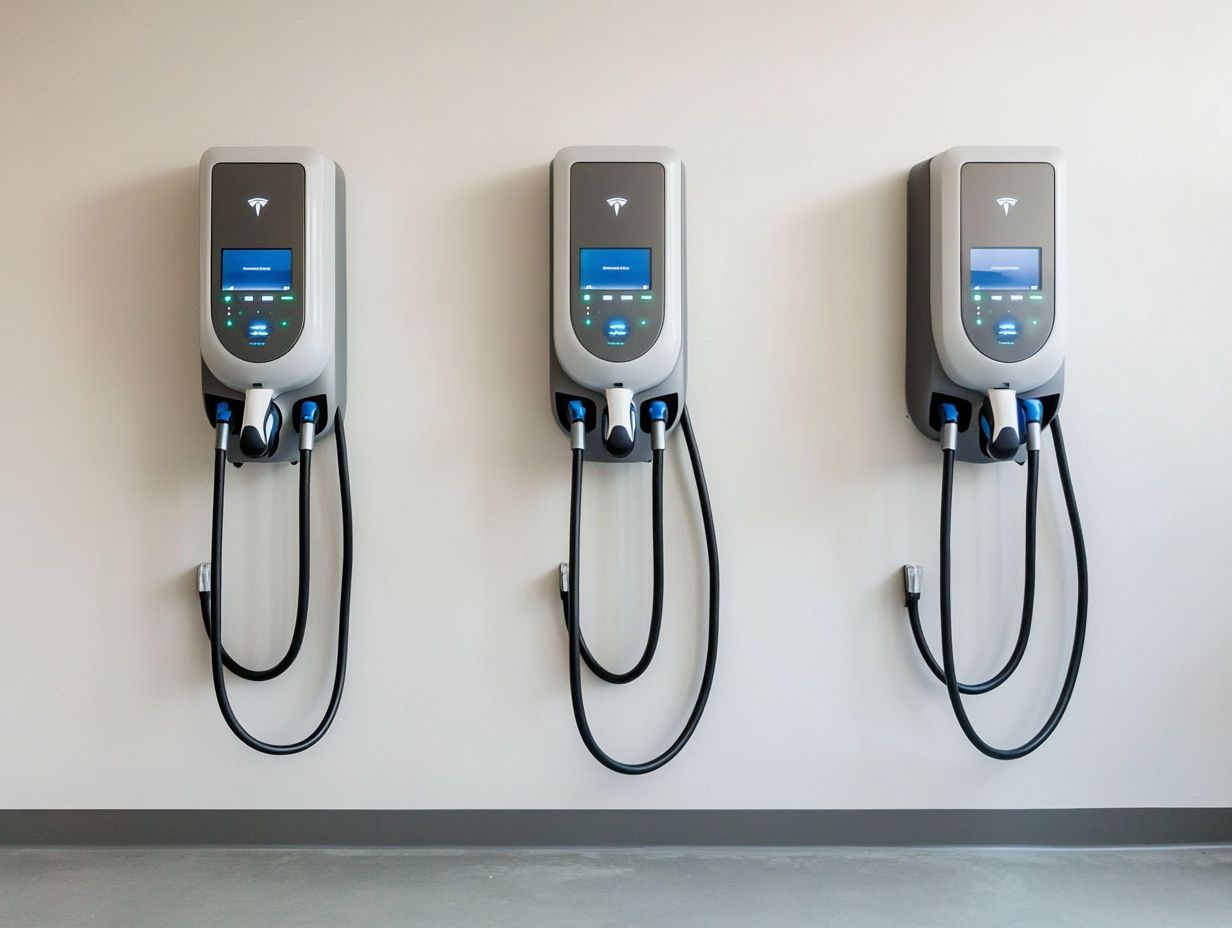
Level 1, Level 2, and Level 3 chargers offer different capabilities for electric vehicles. Level 3 is the fastest and most advanced option. Level 1 chargers are basic and generally used for overnight charging at home, while Level 2 chargers are quicker and more suitable for daily use. Level 3 chargers, or DC fast chargers, are very powerful and can charge an EV up to 80% in just 20-30 minutes, making them ideal for long-distance travel.
Understanding Electric Vehicle Chargers
Understanding electric vehicle chargers is vital whether you re already an EV owner or considering the switch.
As the world moves towards sustainable transportation and charging infrastructure grows, it’s essential to familiarize yourself with Level 1, Level 2, and Level 3 chargers. Each level offers unique charging capabilities, power outputs, and operational costs that can significantly impact your experience.
Consider using charging management tools to improve the charging experience, especially in multifamily communities and commercial properties, ensuring convenience for drivers like you.
Overview of Charging Levels
Let s explore the different types of chargers for electric vehicles. Level 1 chargers usually use standard electrical outlets, offering lower power output and requiring longer charging times. In contrast, Level 2 chargers present a more robust solution, suitable for both residential and commercial applications. These stations often require a dedicated electrical circuit and can recharge your vehicle within hours, making them ideal for home installations or workplace setups.
Level 3 chargers, also known as DC fast chargers, provide rapid charging options that significantly reduce the time needed to power up your electric vehicle. As these various charger levels expand throughout the infrastructure, they enhance the accessibility of electric vehicle charging, ultimately boosting adoption rates. Each level plays a crucial role in establishing a comprehensive network that meets the diverse charging requirements of electric vehicle users like you.
Level 1 Chargers
Level 1 chargers are the simplest form of electric vehicle charging, often using standard household outlets. This makes them highly accessible and user-friendly for residential charging.
Typically, these chargers deliver a power output of around 1.4 kW, which means you ll experience a slow yet steady charging process perfect for those who prefer to power up their vehicles overnight.
While installation costs are relatively low, it s important to remember that potential maintenance and charging expenses can accumulate over time. Understanding the long-term implications of relying on Level 1 chargers is essential for making informed decisions about your electric vehicle charging strategy.
Now that you know about the different charging options, it’s time to choose the charger that fits your lifestyle!
Features and Capabilities
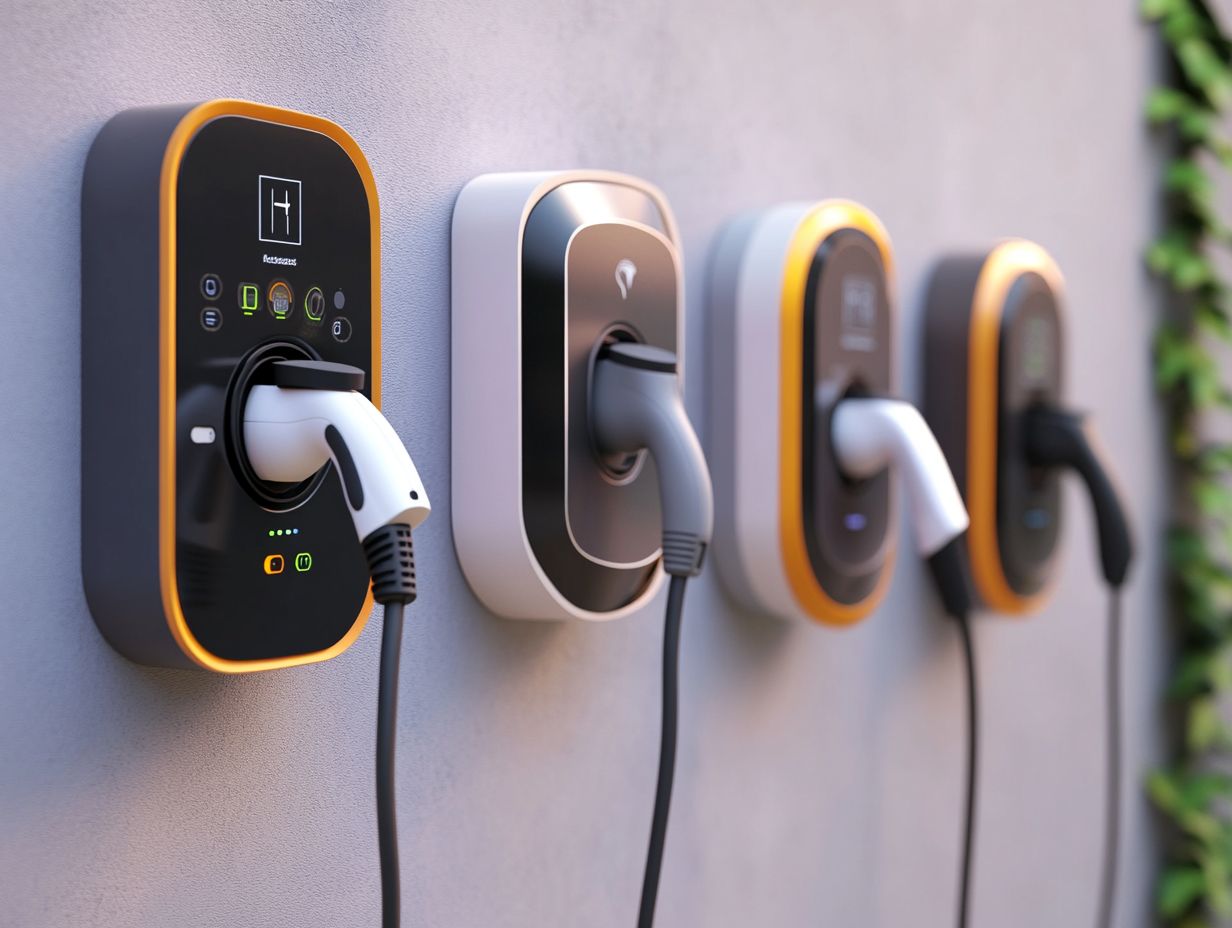
The features and capabilities of Level 1 chargers are designed with your convenience in mind. They allow you to effortlessly connect to standard household electrical outlets. This type of charger typically requires no additional installation fees, providing a user-friendly experience that appeals to those seeking a straightforward charging solution.
While the charging time may be significantly longer than that of Level 2 or Level 3 chargers, which could be a downside for some, the benefits often outweigh this concern.
Despite the longer charging duration, Level 1 chargers are compatible with nearly all electric vehicles on the market. This makes them a versatile choice for most drivers. Their ability to deliver a gentle charge overnight means you can start each day with a fully powered vehicle without the need to rush to a charging station.
Using regular home outlets makes charging simple and stress-free. This simplifies the process and enhances your overall convenience, allowing you to seamlessly incorporate electric vehicle charging into your daily routine.
Level 2 Chargers
Level 2 chargers are a big step up from Level 1 chargers. They provide enhanced charging speed and capabilities designed to meet both residential and commercial needs.
With a power output typically ranging from 3.7 kW to 22 kW, these chargers significantly decrease the time required to charge electric vehicles. They are an ideal choice for EV owners seeking greater flexibility in their charging habits.
Level 2 chargers usually cost more to install than Level 1 chargers, but the increased efficiency and superior user experience often make the investment worthwhile.
Features and Benefits
Level 2 chargers offer amazing benefits that will supercharge your charging experience! Their remarkable speed and compatibility with various electric vehicle supply equipment (EVSE) technologies elevate your charging experience.
These chargers drastically cut down charging time compared to Level 1 solutions. This makes them the go-to choice for many EV owners who value convenience and flexibility in their charging habits.
Their integration into both public and private charging networks strengthens the overall infrastructure. This paves the way for the broader adoption of electric vehicles.
With charging times averaging around four to six hours for a full charge, Level 2 chargers enable drivers to strategically plan their charging around their daily schedule, whether at home or at work.
Their versatility in plug types ensures compatibility with a wide array of electric vehicles. This makes them accessible to a larger audience.
This scalability encourages more locations to invest in Level 2 technologies, enhancing the availability of charging stations.
As charging options expand, drivers will notice that range anxiety diminishes. This ultimately facilitates a smoother transition into electric vehicle ownership.
Level 3 Chargers
Level 3 chargers, often referred to as DC fast chargers, stand at the forefront of electric vehicle charging technology! They deliver remarkable speeds that can significantly cut down the time required to recharge your electric vehicle.
Typically located at public charging stations, these chargers harness cutting-edge technology to provide power outputs that exceed 50 kW. This enables you to gain substantial range in just a matter of minutes perfect for those on the go!
This makes Level 3 chargers a vital element of the charging infrastructure, especially for commercial charging solutions and long-distance journeys within the national EV charging network.
Features and Advantages
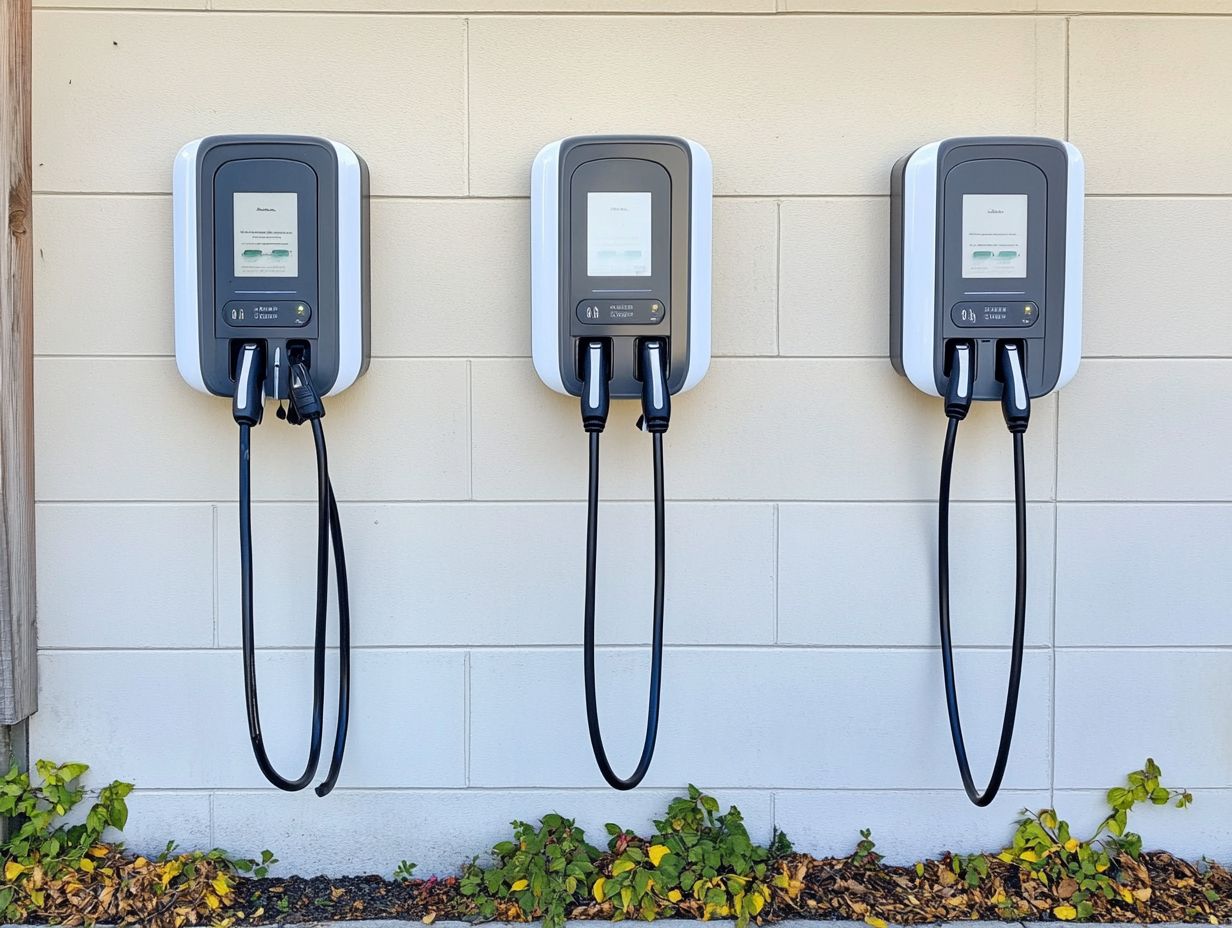
The features and advantages of Level 3 chargers position them as the pinnacle choice for rapid electric vehicle (EV) charging, primarily due to their remarkable speed and capacity to meet commercial needs.
Imagine recharging your vehicle in mere minutes, allowing you to seamlessly continue your journey without the frustration of lengthy waits. Their strategic placement in high-traffic areas enhances your charging experience and supports the growing demand for EVs.
Beyond their swift charging capabilities, Level 3 chargers boast user-friendly interfaces that streamline the process, making it accessible for anyone stepping into EV ownership.
However, installation considerations play a critical role; these chargers typically require a robust electrical infrastructure, which is a strong electrical system capable of handling high power. This can demand considerable planning and investment.
This investment often leads to substantial returns, increasing foot traffic and elevating customer satisfaction.
By minimizing downtime for drivers, Level 3 chargers enhance your experience while contributing to a more reliable and expansive charging network, all while paving the way for sustainable transportation in the future.
Choosing the Right Charger for Your Needs
Choosing the right charger for your EV involves thoughtful consideration of various factors such as your charging requirements, available solutions, and personal preferences regarding convenience and speed.
Each charger level Level 1, Level 2, and Level 3 comes with its own set of advantages and disadvantages that can influence installation costs and the overall experience.
By understanding your driving habits, battery size, and the flexibility you require in your charging routine, you can identify the most suitable charging solution tailored to your lifestyle and needs.
Factors to Consider
When selecting a charger, it’s crucial to consider several key factors to ensure it aligns perfectly with your EV’s charging requirements and your lifestyle.
- Think about the battery size of your EV.
- Consider the charging speed you desire.
- Evaluate installation costs associated with different charger levels.
- Assess your daily driving habits and the availability of charging stations.
After all, the right charger should offer both convenience and efficiency. Don’t forget to check the compatibility of the charger with your vehicle’s make and model, as not all chargers work seamlessly with every EV.
Exploring smart charging options can elevate your experience, providing features like scheduling and remote monitoring that make charging hassle-free.
Where you install it matters! Indoor or outdoor settings can affect durability and ease of access. Lastly, consider potential future upgrades to your vehicle or technology. Choosing a charger that can adapt to your evolving needs is essential for long-term satisfaction.
Frequently Asked Questions
What are the differences between level 1, 2, and 3 chargers?
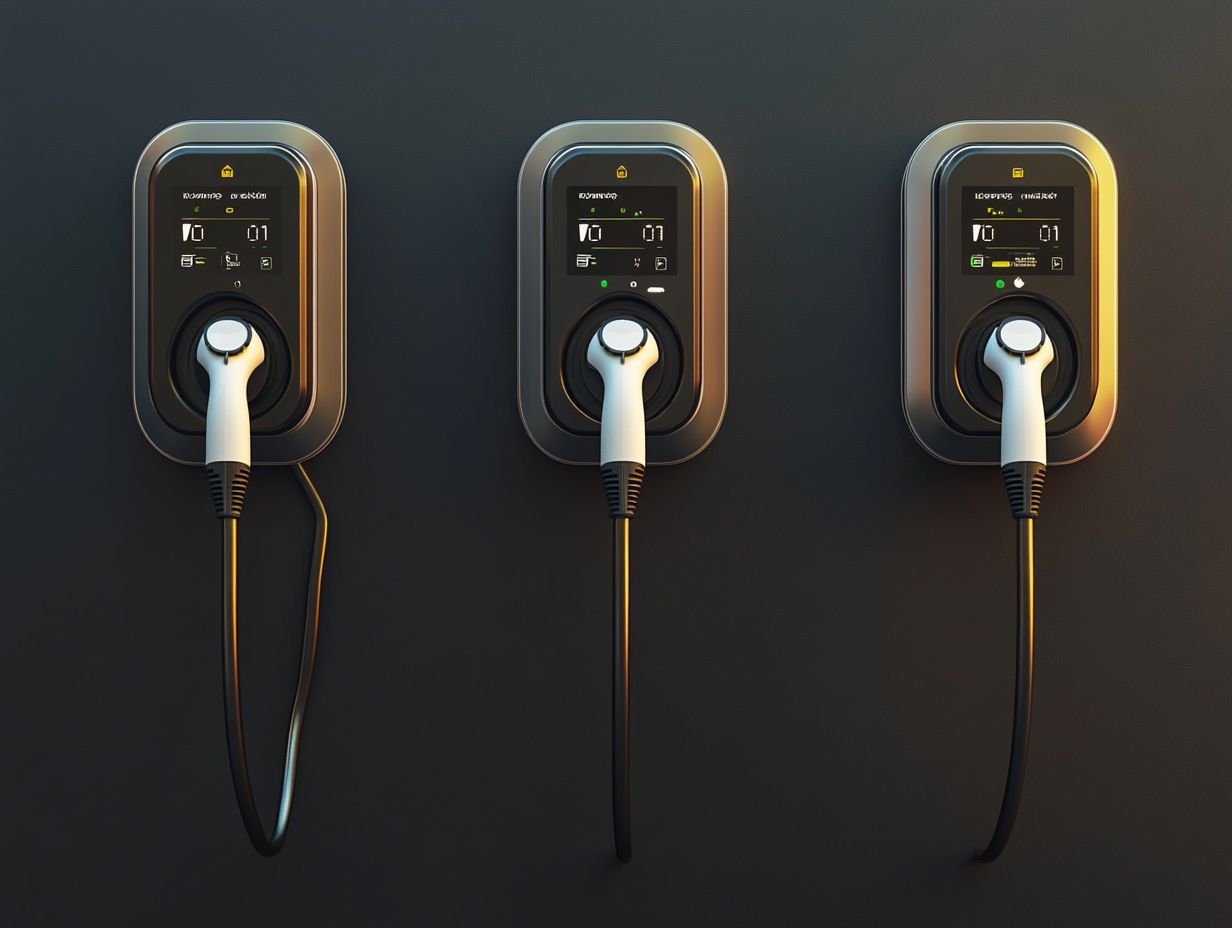
Level 1, 2, and 3 chargers refer to the speed and power capabilities of EV chargers. Level 1 chargers are the slowest, Level 2 chargers are medium-speed, and Level 3 chargers are the fastest.
What is the charging time for each level of charger?
The charging time for Level 1 chargers is approximately 8-12 hours for a full charge. Level 2 chargers take around 3-8 hours, while Level 3 chargers can charge an EV in as little as 30 minutes.
What is the power output for each type of charger?
Level 1 chargers typically have an output of 120 volts and 12 amps, while Level 2 chargers have an output of 240 volts and 30 amps. Level 3 chargers have the highest power output, ranging from 440-600 volts and 100-300 amps.
Are all electric vehicles compatible with level 1, 2, and 3 chargers?
Most EVs are compatible with Level 1 and 2 chargers, but not all can use Level 3 chargers. Level 3 chargers are typically designed for fast-charging EVs, such as Tesla models.
Ready to choose the right charger? Let s dive into what you need!
What is the cost difference between level 1, 2, and 3 chargers?
Level 1 chargers are the most affordable option, typically costing around $300. In contrast, Level 2 chargers range from $500 to $1,500, while Level 3 chargers start at a hefty $15,000.
What are the main benefits of level 2 and 3 chargers compared to level 1 chargers?
Level 2 and 3 chargers can charge your electric vehicle much faster. They provide more efficient charging, which is a huge convenience for drivers on the go.
Some models even come with cool features like Wi-Fi connectivity and the ability to monitor charging remotely.

